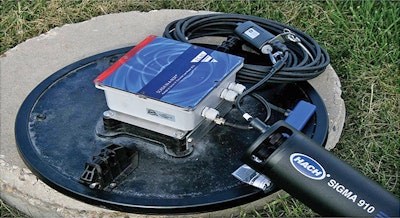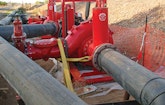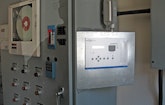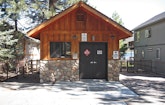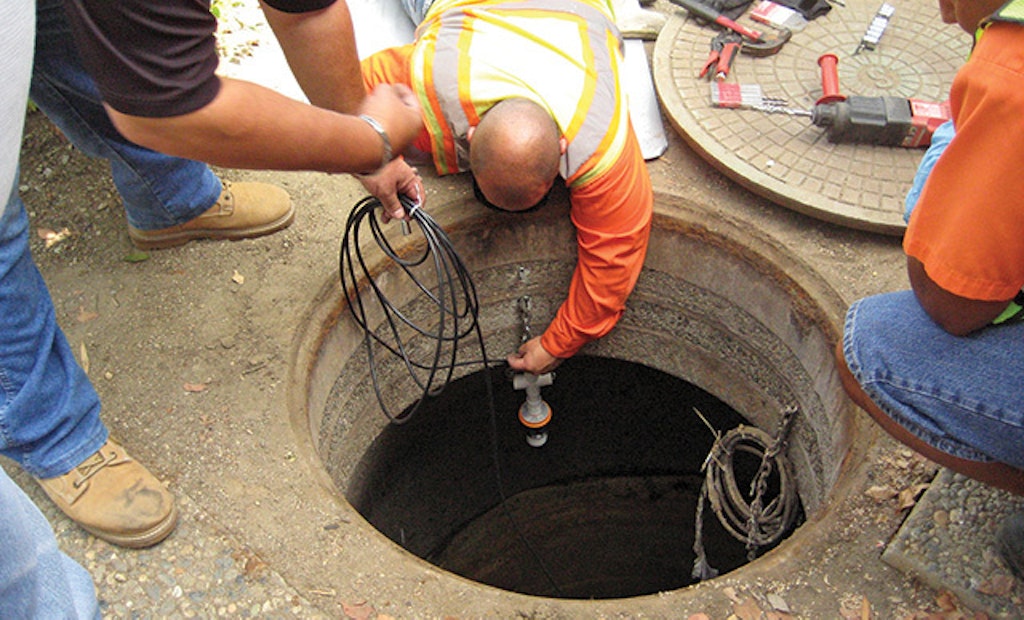Interested in Infrastructure?
Get Infrastructure articles, news and videos right in your inbox! Sign up now.
Infrastructure + Get AlertsMonitoring system prevents sewer spill
Problem
A sewer in West Covina, Calif., overflowed occasionally. Operators needed a way to monitor the level and receive alerts before spills occurred.
Solution
They installed the SL100 sewer level monitoring system from D&D Engineering in the pump control cabinet. The system has an ultrasonic level transmitter, data logger, cellular data modem and backup battery.
Result
When a power failure shut down the pumps a year later, the system emailed maintenance employees in time to dispatch a portable generator, power up the pumps, and prevent a major spill. 888/333-6474; www.sensorguys.com
Antenna system controls
deep tunnel network
Problem
The Metropolitan Water Reclamation District of Greater Chicago, Ill., built deep tunnels connected to reservoirs to hold peak flows. Stormwater and sewage pass through valve chambers to underground drop shaft structures requiring real-time SCADA communications for flow control with sluice gates. The deep tunnel network required a foolproof method for underground wireless communications.
Solution
The district chose a custom solution from ELAN Technologies involving composite manhole vault covers with an integrated antenna system tuned to 479 MHz. The system's communications range was 15 miles from the repeater site.
Result
The system operates seamlessly, allowing wireless communications for real-time control of underground structures used for deep-tunnel SCADA. The project earned ELAN the prestigious Most Innovative Antenna System Application Award from Antenna Systems Industry. 815/463-8105; www.elantechnologies.net
Dewatering uses bypass pumping
Problem
A section of 54-inch sewer main collapsed near a major intersection in Albuquerque, N.M., forcing its closure. TLC Plumbing and Utility of Albuquerque worked to contain the sewage overflow, but sliplining repairs would require bypass pumping. The contractor called Griffin Dewatering.
Solution
Griffin Dewatering personnel mobilized equipment in 4.5 hours. In another seven hours, they set up the bypass and fused the pipe for the discharge line, completing it by midnight. By 3:30 a.m., they activated the pumps. When TLC Plumbing workers arrived, the area was dry enough for them to excavate entry and pulling pits and to open one traffic lane through the intersection.
The contractor then asked Griffin to install a backup bypass pump, which workers did at 6 a.m. when flows were lower. They completed the tie-in in two hours. Because flows were approaching peak capacity, they waited until 4 a.m. the following day to break through the crown of the pipe and install the suction line.
Result
The bypass system ran for nearly two months without incident. 800/431-1510; www.griffindewatering.com
Dry pit pumps handle wet-weather flows
Problem
Grit collecting in the cooling jackets of two dry pit submersible pumps at the Northeast Central Pump Station in Libertyville, Ill., created extensive maintenance problems for Lake County Department of Public Works crews. Officials also wanted to increase the station's capacity to meet wet-weather flows.
Solution
The city put out a bid for pumps with a closed-loop cooling system and selected three 268 hp dry pit submersibles with cooling jackets and variable-frequency drives from KSB. Each pump produces 9,700 gpm at 76 feet of total dynamic head.
Result
The pumps increased capacity by 30 percent while using the existing wet well and much of the original piping. They have operated trouble-free since startup in January 2012. 804/222-1818; www.ksbusa.com
Operating system eliminates false alarms
Problem
Up to six false alarms per day — often after hours — from the obsolete PLC/radio-based SCADA system at the Big Bear Lake (Calif.) Public Works Department began costing the city excess overtime. Besides technicians driving to the lift station to identify the alarm due to limited diagnostics, the system also suffered inadequate data collection and failure-prone communications.
Solution
The department purchased the AquaView operating system with APP 721 controller and cellular modem technology from Flygt (Xylem). Improved real-time control and alarm monitoring were immediate at all 12 lift stations. The system has programmable alarm sets, diverse data collection, archive recording, user-friendly displays and two-way diagnostic support via the Internet.
Result
Improved reliability allows technicians to enjoy undisturbed sleep. 704/409-9700; www.flygtus.com
